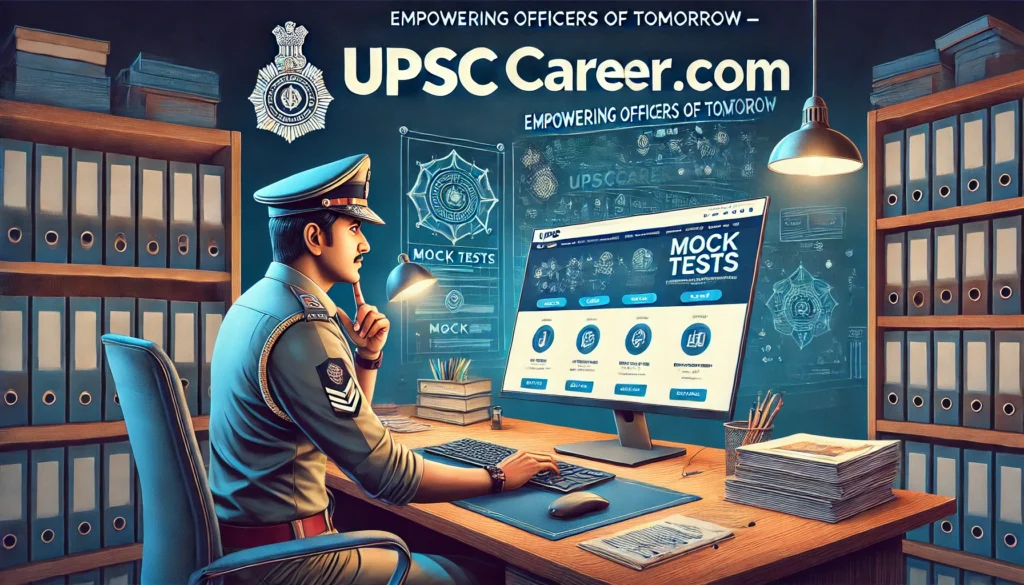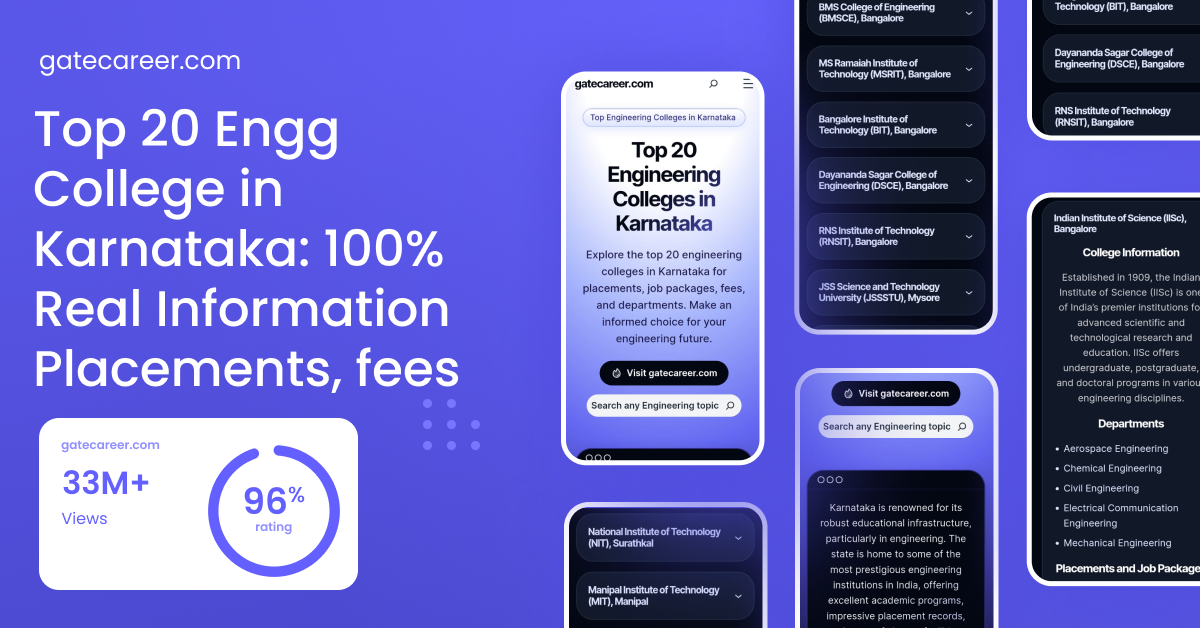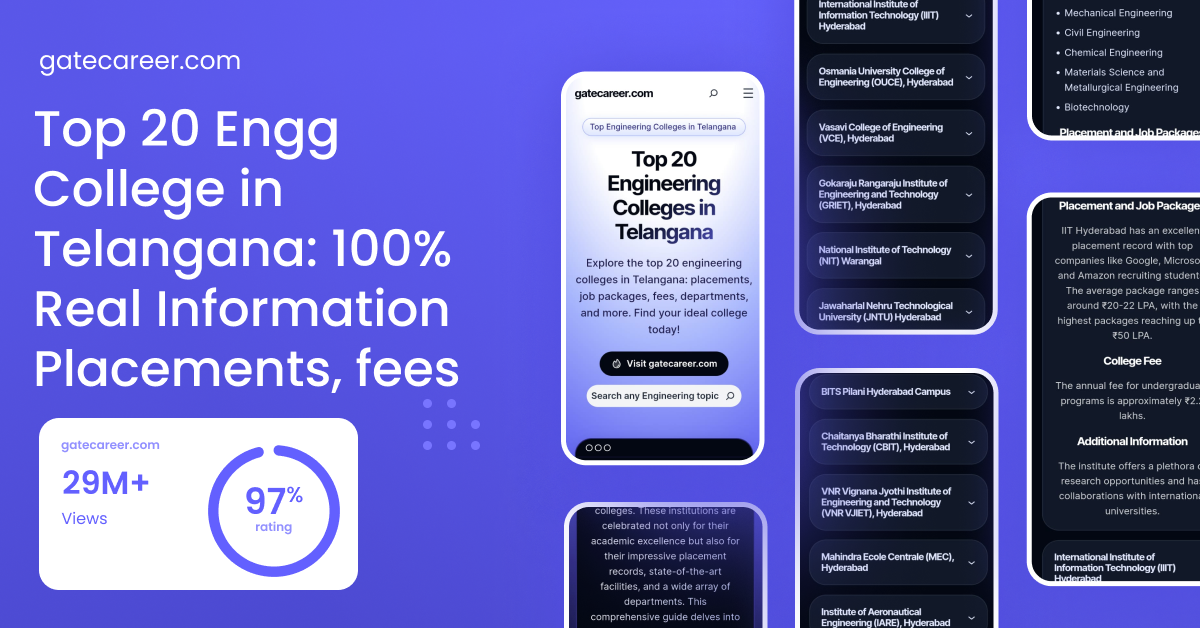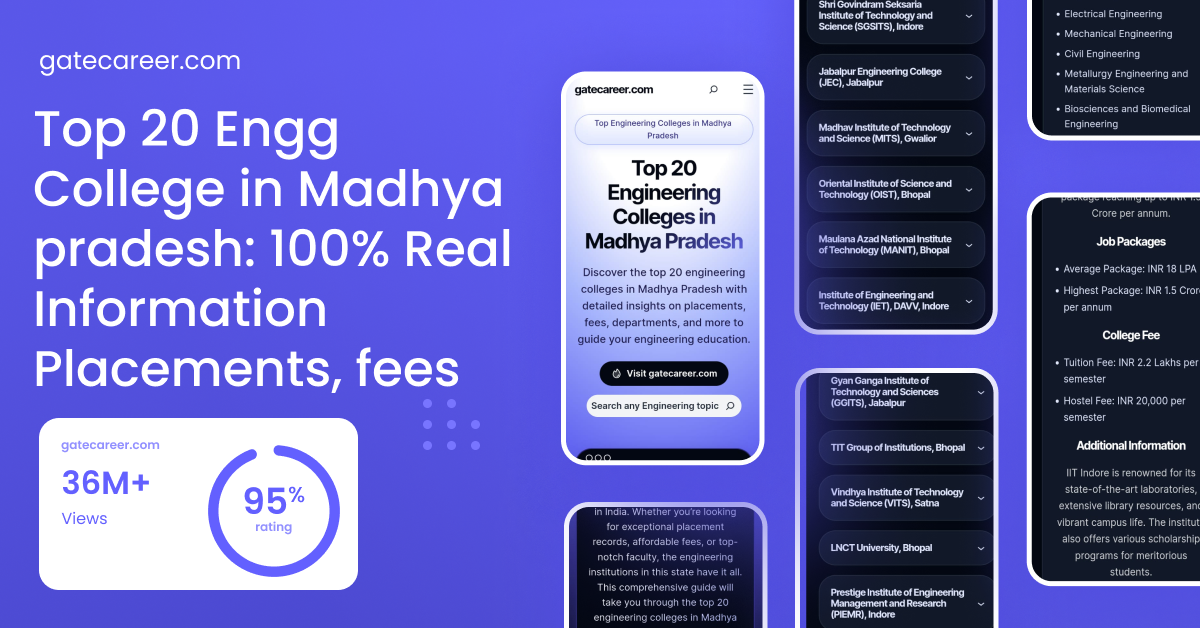Interview Questions
Top 40 Engineering Interview Questions (With Answers)
These detailed answers provide a comprehensive understanding of how to respond effectively to common interview questions for engineering students
Navigating the engineering job market can be challenging, especially when it comes to acing the interview. To help you prepare, we’ve compiled a comprehensive guide featuring 40 common engineering interview questions, complete with detailed answers and insights. This guide will not only help you anticipate what interviewers might ask but also enable you to articulate your experiences, skills, and passion for engineering effectively.
Interview Questions
Tell me about yourself.
“I am currently a senior pursuing a Bachelor of Engineering in Mechanical Engineering from XYZ University. My passion for engineering began in high school when I joined the robotics club and found joy in solving complex problems through design and innovation. Over the past few years, I have undertaken various projects, including designing a solar-powered water pump and an automated irrigation system. I also completed an internship at ABC Corporation, where I worked on optimizing manufacturing processes. My technical skills include proficiency in CAD software, MATLAB, and Python. I am excited about the opportunity to contribute to your team and further develop my engineering expertise.”
Can you describe a challenging engineering project you worked on?
“One of the most challenging projects I worked on was during my junior year, where I led a team to design and build an autonomous drone for a national competition. The project involved extensive research, design iterations, and testing. We faced challenges in achieving flight stability and integrating the GPS navigation system. By collaborating effectively and utilizing our collective expertise, we were able to overcome these obstacles and successfully compete. This experience taught me the importance of perseverance, teamwork, and continuous learning.”
What software and tools are you proficient in?
“I am proficient in several engineering software and tools, including AutoCAD, SolidWorks, MATLAB, and ANSYS for design and simulation tasks. I also have experience with Python and C++ for programming and automation projects. During my internship, I used these tools to optimize manufacturing processes and design custom machinery components, which enhanced my practical knowledge and skills.”
Describe a time when you had to work in a team. How did you handle it?
“In my final year, I worked on a capstone project with a team of five students to design and prototype an energy-efficient HVAC system. As the team leader, I ensured clear communication and division of tasks based on each member’s strengths. We held regular meetings to track progress and address any issues. When conflicts arose, I facilitated open discussions to find mutually agreeable solutions. Our collaboration and effective teamwork resulted in a successful project that was well-received by our professors and industry mentors.”
How do you handle tight deadlines and pressure?
“I handle tight deadlines and pressure by staying organized and focused. I prioritize tasks based on their urgency and importance, break them down into manageable steps, and create a timeline to ensure steady progress. During high-pressure situations, I maintain a calm and positive attitude, which helps me think clearly and make sound decisions. I also make sure to communicate effectively with my team and supervisors to ensure everyone is aligned and working towards the same goals.”
Why did you choose engineering as your career?
“I chose engineering because of my innate curiosity and desire to understand how things work. I have always been fascinated by the principles of physics and mathematics and their application in solving real-world problems. Engineering provides a platform to innovate and create solutions that can improve people’s lives. The field’s dynamic and ever-evolving nature also ensures that I am constantly learning and facing new challenges, which keeps me motivated and engaged.”
How do you approach problem-solving?
“My approach to problem-solving involves a systematic process: first, I thoroughly understand the problem by gathering all relevant information and identifying the key issues. Then, I brainstorm potential solutions and evaluate them based on feasibility, cost, and impact. I also seek input from peers or mentors to gain different perspectives. After selecting the best solution, I implement it while monitoring progress and making adjustments as necessary. Finally, I review the outcomes to learn from the experience and improve my problem-solving skills for future challenges.”
How do you stay updated with the latest developments in engineering?
“I stay updated with the latest developments in engineering by subscribing to industry journals, following leading engineering organizations and professionals on social media, and participating in webinars and conferences. I am also a member of the IEEE and the ASME, which provide access to a wealth of resources, including technical papers, articles, and networking opportunities. Additionally, I regularly engage in online courses and tutorials to continuously expand my knowledge and skills.”
What are your strengths and weaknesses?
“One of my strengths is my analytical mindset, which allows me to approach problems logically and systematically. I am also a quick learner, adaptable, and possess strong technical skills in design and programming. However, a weakness I am working on is my tendency to be overly detail-oriented, which can sometimes slow down my progress. I am learning to balance attention to detail with efficiency by setting clear deadlines and prioritizing tasks.”
What motivates you to work hard?
“What motivates me to work hard is the desire to achieve excellence and make a meaningful impact through my work. I am driven by the satisfaction of solving complex problems and seeing my designs come to life. The continuous opportunity to learn and grow in my field also keeps me motivated. Additionally, the prospect of contributing to innovative projects that can improve people’s lives and advance technology is a significant source of inspiration for me.”
How do you manage your time and prioritize tasks?
“I manage my time and prioritize tasks by using a combination of planning tools and techniques. I start by listing all the tasks I need to accomplish and categorizing them based on urgency and importance. I use tools like Gantt charts and to-do lists to organize my work and set deadlines for each task. Regularly reviewing and adjusting my plan helps me stay on track. I also allocate time for breaks and buffer periods to handle unexpected issues, ensuring I can maintain a steady workflow without feeling overwhelmed.”
How do you handle failure or setbacks?
“I handle failure or setbacks by viewing them as learning opportunities. When faced with a setback, I first analyze what went wrong and why. I seek feedback from peers or mentors to gain different perspectives and identify areas for improvement. Then, I develop a plan to address the issues and apply the lessons learned to future projects. This approach helps me build resilience and continuously improve my skills. For instance, when a prototype I designed failed during testing, I used the experience to refine my design and enhance my problem-solving techniques.”
Why do you want to work for our company?
“I want to work for your company because of its reputation for innovation and excellence in engineering. I am particularly impressed by your commitment to sustainability and cutting-edge technologies. Your projects align with my interests and values, and I am excited about the opportunity to contribute to your team’s success. Additionally, I believe that your company provides an excellent environment for professional growth, with access to advanced resources, a collaborative culture, and opportunities for continuous learning and development.”
How do you ensure the quality and accuracy of your work?
“To ensure the quality and accuracy of my work, I follow a meticulous approach that includes thorough planning, detailed documentation, and regular reviews. I start by understanding the requirements and setting clear objectives. During the execution phase, I adhere to established standards and guidelines and conduct frequent checks to verify accuracy. I also seek feedback from peers and mentors to identify potential errors or areas for improvement. Finally, I review the completed work to ensure it meets the expected quality standards and make any necessary adjustments.”
How do you handle working on multiple projects simultaneously?
“Handling multiple projects simultaneously requires effective time management, organization, and prioritization. I start by breaking down each project into smaller tasks and setting deadlines. I use tools like project management software to keep track of progress and ensure all tasks are completed on time. I prioritize tasks based on their urgency and importance and allocate specific time blocks for each project to maintain focus. Regularly reviewing my schedule and adjusting as needed helps me stay on track and ensure all projects receive the necessary attention.”
Can you explain a concept you learned recently?
“Recently, I learned about finite element analysis (FEA) during a course on computational mechanics. FEA is a numerical method used to solve complex structural, thermal, and fluid problems by breaking down a large system into smaller, simpler parts called finite elements. This method allows engineers to predict how a design will react to various forces and conditions, helping to optimize and validate designs before physical prototypes are created. I applied this concept in a project to analyze the stress distribution in a bridge model, which was both challenging and rewarding.”
What are your career goals?
“My career goals include becoming a proficient and innovative engineer who contributes to impactful projects that address real-world challenges. In the short term, I aim to gain hands-on experience and deepen my technical knowledge by working with a dynamic team. In the long term, I aspire to take on leadership roles where I can guide and mentor junior engineers, and possibly pursue advanced studies or certifications to stay at the forefront of my field. Ultimately, I want to be recognized for my contributions to advancing technology and improving society.”
Can you describe a situation where you demonstrated leadership?
“During my internship at ABC Corporation, I was given the responsibility to lead a team of interns in a project to improve the efficiency of a production line. I coordinated the team’s efforts, set clear goals, and facilitated regular meetings to track progress and address challenges. I also ensured that each team member’s strengths were utilized effectively. By fostering a collaborative environment and maintaining open communication, we successfully implemented several process improvements that increased efficiency by 15%. This experience honed my leadership skills and taught me the importance of teamwork and effective communication.”
What is your experience with project management?
“I have gained project management experience through various academic and internship projects. In my capstone project, I was responsible for planning and coordinating the design and development of an energy-efficient HVAC system. I created a project timeline, allocated tasks, and monitored progress to ensure we stayed on schedule. I also managed resources and resolved any issues that arose. During my internship, I applied these skills to manage smaller projects, such as optimizing a production line, which involved similar planning, coordination, and communication tasks.”
What do you think is the most important quality for an engineer to possess?
“I believe the most important quality for an engineer to possess is problem-solving skills. Engineering is fundamentally about identifying, analyzing, and solving problems to create effective and efficient solutions. A good engineer must be able to approach problems logically, think critically, and apply technical knowledge creatively. Additionally, qualities such as attention to detail, teamwork, communication, and adaptability are crucial to successfully navigating the challenges and complexities of engineering projects.”
What inspired you to pursue a degree in engineering?
“My inspiration to pursue engineering came from my fascination with how things work. From a young age, I was intrigued by machines and technology. I enjoyed disassembling and reassembling household gadgets, and my curiosity about their inner workings only grew with time. In high school, I excelled in mathematics and physics, which solidified my decision to study engineering. The prospect of creating innovative solutions to real-world problems was particularly appealing, driving me to choose this career path.”
What engineering accomplishment are you most proud of?
“I am most proud of leading a team to design and build a solar-powered water purification system. The project aimed to provide clean drinking water in remote areas. We successfully designed a system that utilized solar panels to power a filtration unit, making it both sustainable and cost-effective. The prototype was tested in a rural community and received positive feedback for its effectiveness and ease of use. This project not only enhanced my technical skills but also gave me immense satisfaction knowing that our work could make a positive impact.”
Describe your experience with CAD software.
“I have extensive experience with CAD software, particularly AutoCAD and SolidWorks. Throughout my coursework and projects, I have used these tools to create detailed 2D and 3D models of various mechanical components and systems. For instance, in a project to design an automated assembly line, I used SolidWorks to model each part and simulate the assembly process. This allowed us to identify potential issues and make necessary adjustments before physical prototyping, saving time and resources.”
What role do you usually take in a team setting?
“In a team setting, I often take on the role of a coordinator or leader, ensuring that tasks are distributed efficiently and that the team stays on track. I focus on clear communication, setting goals, and facilitating collaboration among team members. For example, during a group project to develop a renewable energy solution, I coordinated the efforts by assigning tasks based on individual strengths, organizing regular meetings, and troubleshooting any issues that arose. However, I am also flexible and can adapt to other roles as needed to support the team’s success.”
What steps do you take to ensure safety and compliance in your engineering projects?
“Ensuring safety and compliance in engineering projects is paramount. I start by thoroughly understanding and adhering to relevant safety standards and regulations. During the design phase, I conduct risk assessments to identify potential hazards and implement mitigation measures. I also incorporate safety features into the design and use reliable materials and components. Regular inspections and testing are conducted throughout the project to ensure compliance. For example, while working on a mechanical system, I ensured all components met the necessary safety standards and conducted thorough testing to validate their performance.”
Can you discuss a technical challenge you faced during a project and how you overcame it?
“During a project to design a robotic arm, I faced a significant technical challenge with the precision of the arm’s movements. The initial design led to inconsistent results. To overcome this, I conducted a thorough analysis of the mechanics and realized that the issue was with the actuator calibration. By recalibrating the actuators and incorporating a feedback control system using sensors, I was able to achieve the desired precision. This experience taught me the importance of detailed analysis and iterative testing.”
How do you keep up with the rapid advancements in engineering technology?
“To stay current with advancements in engineering technology, I regularly read industry journals and subscribe to newsletters from leading engineering organizations. I also follow influential engineers and technology companies on social media. Additionally, I participate in webinars, attend conferences, and take online courses to expand my knowledge. Being a member of professional organizations such as IEEE and ASME also provides access to valuable resources and networking opportunities.”
How do you approach learning a new engineering concept or tool?
“When learning a new engineering concept or tool, I start by understanding the fundamental principles behind it. I use a combination of textbooks, online tutorials, and instructional videos to get a comprehensive overview. I then apply the new knowledge to small, practical projects to gain hands-on experience. Seeking guidance from professors, mentors, or colleagues who are proficient in the area also helps me grasp the concept more effectively. I believe in continuous learning and am always eager to explore new areas in engineering.”
How do you handle constructive criticism?
“I view constructive criticism as an opportunity for growth and improvement. When receiving feedback, I listen carefully and try to understand the perspective of the person giving it. I ask clarifying questions if needed and reflect on how I can apply the suggestions to enhance my work. For instance, during a peer review of a project report, I received feedback about improving the clarity of my technical explanations. I took this advice to heart, revised my report accordingly, and noticed a significant improvement in the overall quality and readability.”
Can you give an example of how you applied theoretical knowledge to a practical problem?
“In a project to design a suspension system for a small vehicle, I applied my theoretical knowledge of mechanics and material science. Understanding the principles of stress, strain, and damping, I calculated the required stiffness and damping coefficients for the springs and shock absorbers. I then selected appropriate materials and designed the components using CAD software. After fabricating a prototype, we conducted tests and made adjustments based on the results, successfully translating theoretical concepts into a functional and reliable suspension system.”
What do you consider the most significant trend in engineering today?
“One of the most significant trends in engineering today is the integration of artificial intelligence and machine learning into various engineering disciplines. These technologies are transforming how we design, analyze, and optimize systems, making them more efficient and intelligent. AI and ML are being used in predictive maintenance, autonomous vehicles, smart grids, and many other applications, enhancing performance and enabling new capabilities. As an engineering student, I am excited about the potential of these technologies and am actively learning about their applications in my field.”
How do you ensure effective communication within a multidisciplinary team?
“Effective communication within a multidisciplinary team is crucial for project success. I ensure this by using clear and concise language, avoiding technical jargon that may not be familiar to all team members. Regular meetings and progress updates help keep everyone informed and aligned. I also encourage open discussions and actively listen to input from all team members, fostering a collaborative environment. For example, while working on a project that involved both mechanical and electrical engineers, I facilitated meetings where each discipline could explain their work and how it integrated with the overall project, ensuring a cohesive effort.”
How do you handle conflicting priorities or deadlines?
“Handling conflicting priorities or deadlines requires effective time management and communication. I start by assessing the urgency and importance of each task, then prioritize accordingly. I communicate with stakeholders to understand their expectations and negotiate deadlines if necessary. Breaking down tasks into smaller, manageable steps helps me maintain progress on multiple fronts. For instance, when juggling multiple projects with overlapping deadlines, I created a detailed schedule, allocated specific time blocks for each task, and ensured clear communication with team members to manage expectations and deliver quality work on time.”
How do you approach environmental considerations in your engineering projects?
“Environmental considerations are integral to responsible engineering. I approach this by prioritizing sustainability in material selection, design processes, and energy consumption. I conduct life cycle assessments to understand the environmental impact of a product from manufacturing to disposal. Incorporating energy-efficient designs and using renewable resources where possible are also key strategies. For example, in a project to design a sustainable building system, I selected eco-friendly materials, integrated energy-efficient technologies, and ensured the design minimized waste and environmental footprint. This holistic approach helps create solutions that are both effective and environmentally responsible.”
How do you incorporate user feedback into your designs?
“Incorporating user feedback is essential for creating designs that meet user needs and expectations. I start by gathering feedback through surveys, interviews, and usability testing. This feedback helps identify pain points, preferences, and areas for improvement. I analyze the data to prioritize changes based on their impact and feasibility. Iterative design processes, such as prototyping and user testing, allow me to refine the design based on continuous feedback. For example, while designing a mobile app interface, I conducted multiple rounds of user testing, which led to significant improvements in usability and user satisfaction.”
Describe a situation where you had to learn something quickly.
“During my internship at DEF Corporation, I was assigned to a project that required knowledge of a specific simulation software I had not used before. With a tight deadline, I had to learn the software quickly to contribute effectively. I dedicated extra hours to self-study, used online tutorials, and sought guidance from experienced colleagues. Within a week, I was able to understand the basics and apply the software to perform necessary simulations for the project. This experience demonstrated my ability to adapt and learn quickly under pressure.”
What are some key considerations when designing for manufacturability?
“When designing for manufacturability, some key considerations include material selection, ease of assembly, and cost efficiency. I focus on choosing materials that are readily available and suitable for the intended application, balancing performance and cost. The design should minimize the number of parts and complexity, making assembly straightforward and reducing the likelihood of errors. I also consider the capabilities and limitations of the manufacturing processes to ensure the design can be produced reliably and within budget. For example, in a project to design a consumer product, I simplified the design to reduce manufacturing steps and used injection molding for cost-effective production.”
What experience do you have with hands-on prototyping and testing?
“I have extensive experience with hands-on prototyping and testing through various academic projects and internships. For example, in a project to design an automated robotic arm, I was involved in building a physical prototype using 3D printing and off-the-shelf components. I conducted several rounds of testing to evaluate its performance, identify issues, and make necessary adjustments. This iterative process of prototyping and testing helped refine the design and improve its functionality. I enjoy the hands-on aspect of engineering, as it allows me to bring theoretical concepts to life and see the tangible results of my work.”
What steps do you take to troubleshoot and resolve technical issues?
“To troubleshoot and resolve technical issues, I follow a structured approach. First, I gather detailed information about the problem by observing symptoms, reviewing system documentation, and consulting with team members. I then formulate hypotheses about potential causes and systematically test them through experimentation or simulation. Once the root cause is identified, I develop and implement a solution, ensuring it addresses the issue effectively without introducing new problems. For instance, when dealing with a malfunctioning circuit board, I used diagnostic tools to isolate the faulty component and replaced it, restoring the board to proper functionality.”
What do you see as the biggest challenge facing engineers today?
“One of the biggest challenges facing engineers today is the need to balance rapid technological advancement with sustainability and ethical considerations. Engineers must develop innovative solutions that address pressing issues such as climate change, resource depletion, and social equity. This requires a multidisciplinary approach, integrating knowledge from various fields and considering the broader impact of engineering decisions. As an aspiring engineer, I am committed to addressing these challenges by staying informed about emerging technologies, prioritizing sustainable practices, and adhering to ethical standards in my work.”




Leave a Reply